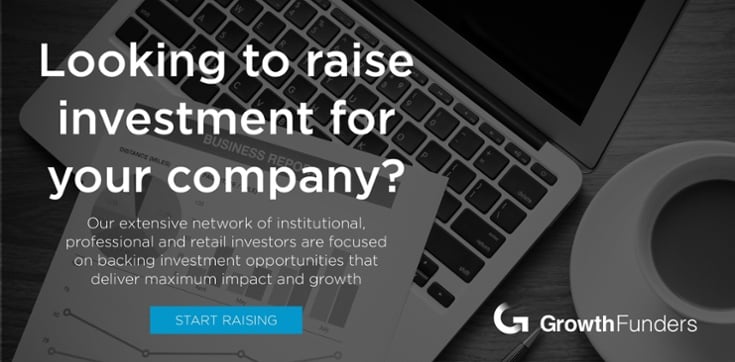Employee engagement: keeping your workers happy as you scale up
Here at GrowthFunders, we often talk about startups and established businesses as separate levels of growth.
That can sound a little over-simplified and makes the process seem like one easy step up. However, we know that there’s a lot of hard work which goes on in the intervening period and a startup which successfully sets out on this growth journey, is known as a scaleup (also referred to as “scaleup company”, “scaleup business”, or “scale up” in this post).
Read about gazelle and high growth companies here.
What is a scale up?
This term is not as widely known as startups is, the reason for which perhaps lies in the numbers. Currently, the UK starts more companies per capita than America.
However, an inability to scale up means that the majority of these start ups fail to grow into larger, successful companies, which means that the UK still possesses relatively fewer large companies in comparison to the US (and other nations). Read the Wired article here.
One of the key factors in business owners’ inability to scale successfully lies in their inability to attract and retain employees who possess the skills, drive, and motivation necessary to help these companies achieve their high growth potential.
This is a serious concern and one which is preventing potential successful businesses from "contribut[ing] a million new jobs and an additional £1 trillion to UK Economic Growth by 2034". (Sherry Coutu in The Scale-up Report on Economic Growth)
Coutu’s in-depth report offers a fantastic insight into the current UK scale up landscape, including how the attraction and retention of suitable employees is essential to economic growth and success. To read the report in full, click here.
In this post, I will be focusing on how to keep employees engaged as your business grows.
Scaling up
As your business finds its feet, solving the challenges which come with being a startup (namely initial market research, lean development, and the identification of a repeatable, scalable business model – MVP), it will begin to grow.
Whilst this is fantastic in that it shows that your business is solving a genuine problem in the marketplace, it also brings with it a new set of challenges.
One of the key areas in which you’ll need to expand is the building of your workforce. In simple terms, a startup has up to 10 employees, an established businesses has in excess of 100, and between those two sits the scaleup.
Just as all companies differ in what they have to offer, so too do the people who own them. For example, perhaps you found it relatively easy to meet with your (up to) 10 employees when your startup first began.
You held weekly meetings with the whole team, talked with individuals on a regular basis, and felt that everyone was fully engaged. However, you may struggle with this as the numbers grow.
One of the most important challenges you face now, as you begin to hire and find startup evolving into a scaleup, is keeping all of those employees (both old and new) engaged.
In other words, you’ve found your scalable and repeatable business model, now you have to successfully execute that plan whilst maintaining operational control over the business.
How can this be done?
First, make sure you actually know how engaged your workforce is / feels. Measuring employee engagement is the first step to improving both it and productivity in the workplace.
If you don’t know what’s really going on, you can’t find or solve the problems.
As well as judging engagement on the quality and quantity of work produced, it is also important to ask your team how they feel about the level of support they are receiving, how satisfied they are with their work, how valued they feel, if there are any fundamental problems.
Some of the ways to measure engagement in your scaleup business include:
-
Set SMART goals
The acronym stands for Specific, Measurable, Attainable, Relevant, and Time-bound and refers to the type of goals which should be set for your employees. Goals which do not follow these points can lack clarity, which means that employees can struggle to complete the work. SMART goals eradicate confusion, introduce focus, and set timeframes, meaning that employees understand the brief and know the deadline they’re working to. It is also easier to analyse the results of SMART goals as oppose to non-SMART goals which helps you see which areas of your company are performing or not performing well, and the reasons for such. People like to know what they’re doing; they like to see that they’re achieving something in their workday. If their task list is never-ending, it can be quite easy for them to lose motivation and as such, productivity can suffer.
-
Frequent feedback
When time spent equals money spent, especially in a high growth scale up, it’s a good idea to hold regular performance reviews. Frequent feedback sessions hold a number of key benefits, including keeping the lines of communication open between you and your employees and making it easier for them to meet goals. Everyone likes to receive recognition for the work they do and employees who are coached, guided, and encouraged are more loyal and enthusiastic about their work.
-
Action plans
Easy when only a few but can still be useful if done correctly as you scale up. Regular action planning meetings between managers and their direct reports ensure that a clear, concise plan can be established for acting on the survey results and improving engagement levels. The crux of employee engagement is at the front-line, immediate supervisor level. Supervisors and front-line managers should be encouraged to drive employee engagement, and be recognized and rewarded for improvements or held accountable when engagement slips.
-
Annual reviews
Often, business owner shy away from giving criticism as they are afraid it may upset or disengage the employee. However, when given as constructive criticism, it often has the opposite effect, especially when given alongside praise. Remember to invite the same when it comes to what your team think about the company. Because they are working with the process on a daily basis, your employees may have genuine suggestions on how these processes could be improved upon. If you feel their suggestions are warranted, let them know, and include in the implementation of new ways. Lack of recognition is one of the top reasons people leave their jobs.
-
Employee surveys
In the past, this has been done via annual surveys / reviews. However, these pose a lot of problems, for numerous reasons. Not least if you are in the process of scaling up and constantly adding new people to the mix. Having to wait a whole year to give feedback (then another to see if implemented changes have had the desired effect) doesn’t give you a realistic view of employee engagement.
There is a new approach to the last point: the micro survey. These are sent out on a more regular basis and are a more efficient way of measuring employee engagement.
High participation rates, ability to cover a broad range of subjects to get a picture of how the employee feels about the company.
Hive is a cloud-based piece of software, designed to measure employee engagement levels and help business owners to attract and retain the right talent whilst their business is scaling up, as well as increasing productivity in the workplace.
There's a growing body of evidence which demonstrates that employee engagement translates into sustainable financial growth, improves productivity, helps attract and retain the best talent, and encourages creativity and innovation.
Why Hive is essential to any businesses serious about high growth:
- Studies show employee engagement ranked number one priority for HR professionals in the UK.
- Evidence suggests only 1/3 of the UK’s 32 million employees is fully engaged.
- Hive revolutionises measurement of employee engagement and increases of productivity in the workplace.
- Cloud-based SaaS business.
- Allows employees to give anonymous feedback, via weekly micro-surveys, to help the business be the best it can be.
Whilst employee satisfaction is not the same as employee engagement, it is important to remember that when employees are given a voice and sufficient autonomy to be productive and innovative, success will follow.
Engaged employees are committed to the business they work for. They are invested in achieving its potential, proactive and productive, and serve as ambassadors for the company.
Usually, fully-engaged employees go above and beyond what is expected of them and will put everything into making the business a success.
Why wouldn’t you do what it takes to ensure that your workforce remains engaged as your business scales up?
%20(3)%20(2).jpg)








